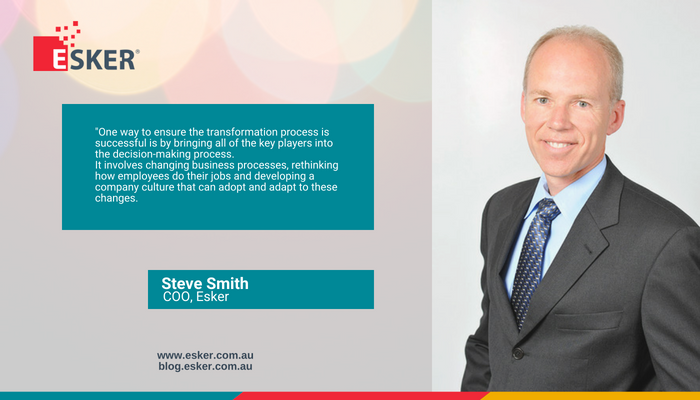The term “digital transformation” has been bandied about so much over the past several years that for some it may have lost its meaning. However, for most companies, whether or not they decide to embrace digital transformation may prove to be a make-or-break moment. The decision will determine whether a company continues to compete in a fast-changing global economy or gets run over by competitors and left by the side of the road.
Advanced companies are going to embrace the technology innovations that enable them to digitize their entire operations. They’re going to be able to automate many areas of their business, such as document processing. They will be agile, flexible and ready to adopt such emerging technologies as data analytics, artificial intelligence, machine learning and the cloud. This will, in turn, help them become more efficient, grow revenues and profits and improve the customer experience.
Digital transformation is here
Digital transformation is happening. Worldwide spending on digital transformation technologies will reach almost $1.3 trillion this year, and more than $2.1 trillion in 2021, IDC said. By the end of 2017, two-thirds of CEOs for Global 2000 businesses had put digital transformation at the center of their corporate strategies, the market research firm said. And executives are relying on digital transformation to be successful in a hyper-competitive, volatile business world. Further, 23% companies that had digitized business operations and customer interfaces had margins 16% higher than the industry average, a report from MIT and AlixPartners found.
However, most U.S. and European businesses are struggling with the digital transformation process. Most companies, 85% of the 400 companies surveyed, said they plan to increase their digital transformation budgets next year, with 37% saying the bump would be more than 10%, a report by Virtusa and Forrester said.
Getting digital transformation right
One way to ensure the transformation process is successful is by bringing all of the key players into the decision-making process. The term “digital transformation” has a very technological vibe to it, but it’s much more than simply throwing new products at end users and hoping for the best. It involves changing business processes, rethinking how employees do their jobs and developing a company culture that can adopt and adapt to these changes.
This means that executives driving the digital transformation efforts need to look beyond only IT and get company-wide support in order to be successful. Here are a few things to keep in mind:
- Make sure the key stakeholders are involved. This means IT, business executives and end users, whether they’re employees or customers. The digital transformation will impact all aspects of the business, so getting input from all sides on what they need to get their jobs done better and faster will be crucial. And keep in mind that many of these end users are already digitizing their personal lives with mobile devices, smart digital assistants, cloud apps and collaboration tools. They will have insights into what works and what doesn’t.
- The partnership between IT, the business, and end users should be ongoing.The digital transformation effort will continue as more capabilities and innovations are introduced, so all of the partners need to be engaged not only at the beginning, but throughout the process. They need to be involved in the planning and the selection of vendors, as the rollout is underway and post-implementation through evaluations and continuous improvement.
- Realize that the process is ongoing. Changes will continue to be made and new technologies introduced. Given that, make sure that users have continuous training so that the investments made by the company don’t fall by the wayside. Instead, the money spent will drive greater efficiencies, improved productivity, happier employees and more profits. It will also make companies more competitive in the grueling search for the right talent. By 2020, a quarter of the Global 2000 companies will have digital training programs and cooperatives, IDC said.
The thought of digitally transforming a company can be intimidating, but it’s happening now. According to IDC, by 2019, digitally transformed companies will generate at least 45% of their revenue from new business models. In many ways, it’s already begun.
The communication tools people use have evolved from desk phones and pagers to email to cloud-based sites like Google Docs to video conferences on smartphones and tablets. Document processing, including billing, invoicing, accounts payable and ordering, are done more often now by software automation solutions than by hand. Forecasting is driven by AI-based data analytic software rather people hunched over spreadsheets. Companies are all adopting these new ways of doing business and will have to continue doing so going forward. And it will take a team approach that involves not only IT, but also business units and end users.
Source:
https://www.ebnonline.com/author.asp?section_id=4071&doc_id=283597&

